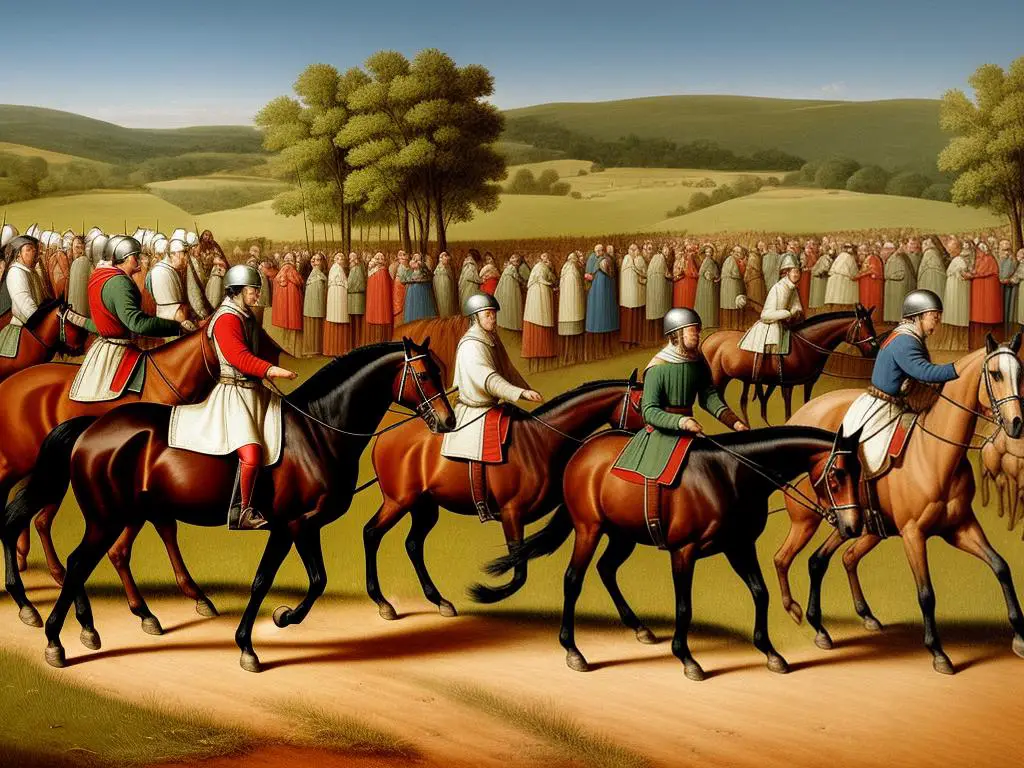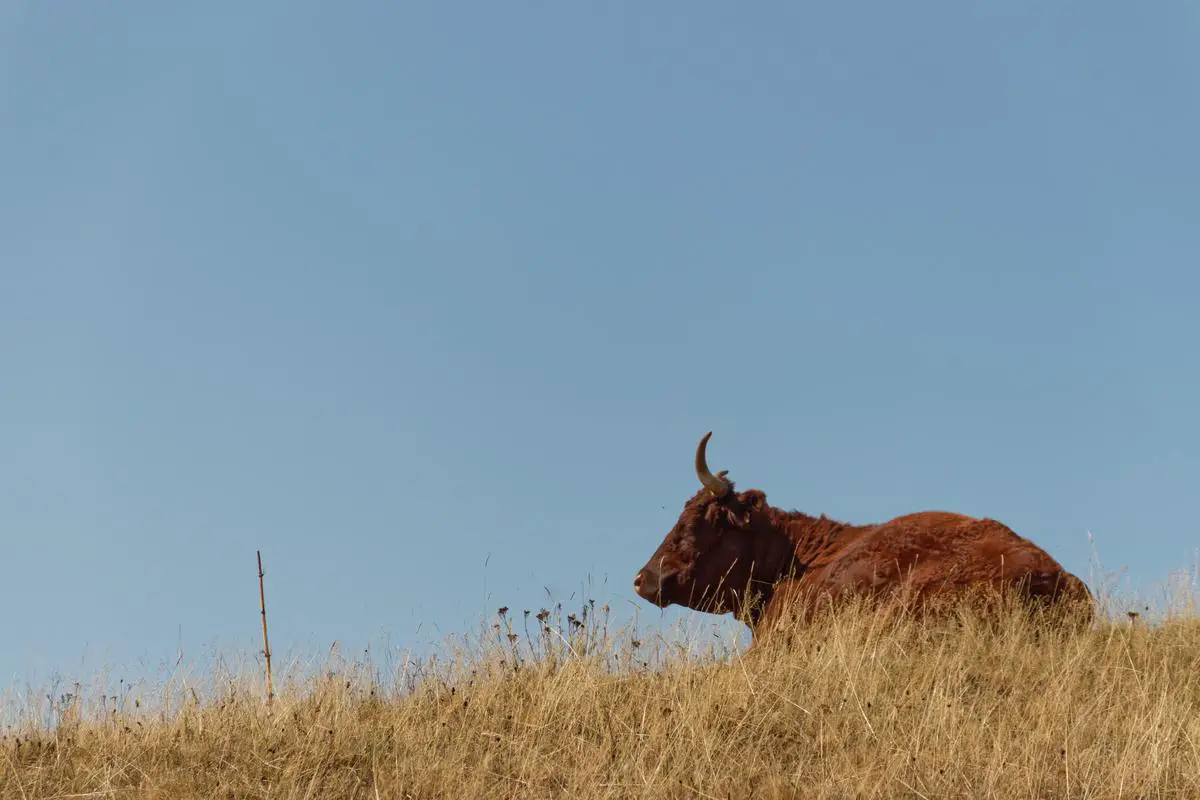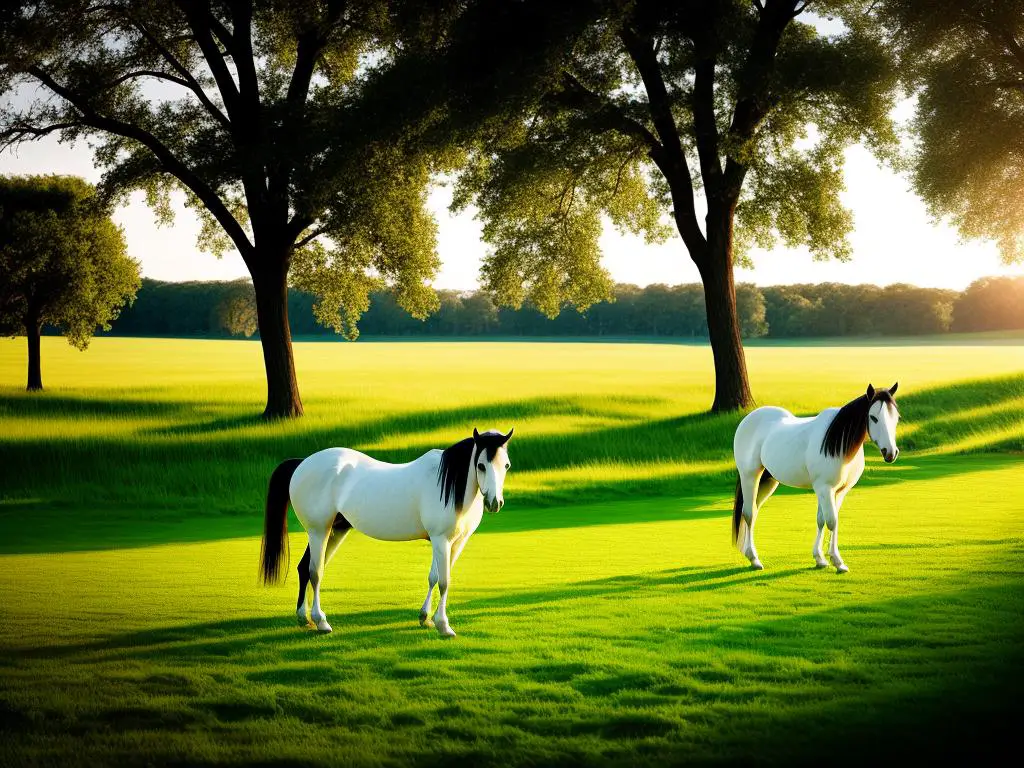The fascinating journey of French equine history encompasses centuries of cultural, societal, and economic transformations, with horses often situated at the crux of these fundamental shifts. From prehistoric times where horses symbolized both power and survival, through the Middle Ages when their utilitarian role in farming, transportation, and warfare became ever-present, the antiquity of French equine is remarkable indeed. This historical evolution extends into the Renaissance and the Modern era, periods marked by significant advancements in equine breeding techniques and the establishment of some of the world’s most renowned horse breeds. The influence of French horse breeds and their global recognition further demonstrate the inherent value and significance of France’s horse breeding programs and practices. Lastly, a look at the modern French equine industry reveals its multifaceted role, from economic contributions to ongoing challenges, intricately tied to historical precedence and future prospects.
Table of Contents (Horspedia)
Ancient Period of French Equine History
Origins of French Equine History: Prehistoric Evidences
From as far back as prehistoric times, horses played a significant role in French society. Archaeological findings revealed the importance of horses in hunting and as a food source. Cave paintings in Lascaux and other parts of France depict horses, evidencing their presence and vital role in the lives of ancient communities.
Transition to Domestication and Use in Warfare
With the progress of civilizations, horses transitioned from being hunted to domesticated animals. Through selective breeding, stronger and faster horses were developed. By the time of the Celts and Gauls, horses had become crucial in warfare. The Gauls were known for their heavy cavalry, using large draft-like horses that could carry a fully armored warrior into battle.
Roman Influence and the Introduction of Lighter Breeds
The Romans, after they conquered Gaul, introduced new breeds of horses, lighter and faster but still strong. These breeds were better suited for chariot races and military campaigns, and their introduction diversified the horse population in France.
Merovingian and Carolingian Eras: Horses in Transportation and Agriculture
During Merovingian and Carolingian eras, around the 5th to 10th centuries, French equine culture saw horses being increasingly used in transportation and plowing fields. The period represented a shift of horses from primarily military use to more farming and transportation purposes. The harness and collar, significant horse-related inventions happened during this time, facilitated this agricultural shift by allowing horses to pull heavier loads more efficiently.
Late Middle Ages: The Rise of Destriers and Horse Armor
Coming to the late Middle Ages (around 11th to 15th centuries), horse breeding took another turn with the rise of the armored knight. This led to the development of large breeds like the Destrier, known for their strength and aggressiveness. These were the horses of the French knights, bred to carry the heavy weight of the armored knight and his weaponry into battle.
Significance in Societal and Cultural Contexts
The role of horses in French history is deeply entrenched in the socioeconomic structure of the nation. Horses were not only used in practical aspects like warfare, transportation, and farming but were also deeply symbolic. Used in various ceremonies, horses brought prestige and honor to their owners. Many mythical and folklore tales in France include horses, emphasizing their relevance in societal structure and collective consciousness.
To grasp the breadth of French equine history, one must journey from the prehistoric era to the Middle Ages. Beginning as a source of sustenance hunted for food and progressing into pivotal roles in warfare, farming, and transportation, horses have played an integral part in progressing French society. This intersection of necessity and convenience saw generation after generation of horses being selectively bred with specific traits to better serve their human counterparts. The cultivation of various breeds of horses to serve diverse needs embodies the symbiotic relationship between human and horse. This relationship, once conceived, became an indelible part of France’s historical, socio-cultural, and economic narrative.

Renaissance and Modern Era Horse Breeding
Advances in Horse Breeding During the French Renaissance
The Renaissance era, stretching from the 14th through the 17th centuries, marked a pivotal period in the story of French equine history. Horses became integral to everyday life, serving as not only as primary means of transportation and reliable field workers, but also standing as symbols of societal status and wealth. The horse breeding techniques of this era shifted, emphasizing endurance, strength, and speed while not forsaking the importance of elegance and aesthetics.
Midway through the 16th century, Charles IX erected the first French Royal Stud, inspired by Italian horse breeders. Established in Caen, Saint-Lô, and Pompadour, these royal studs primarily focused on breeding durable destrier war horses, speedy coursers, and nimble palfreys. The establishments of these royal studs marked a paradigm shift within French equine breeding as an emphasis was placed on selective breeding for desired traits and characteristics.
Modern Era Horse Breeding in France
The transition from the Renaissance to the modern era brought about numerous changes in French horse breeding techniques and practices. In 1665, Louis XIV established the royal stud at Saint-Lô, further improving the quality of French breeds through meticulous breeding practices and importation of foreign stallions. This period was marked by a move away from breeding large war horses towards breeding smaller, more agile horse breeds suitable for carriage work, light cavalry, and recreational riding.
In the 19th century, the French state assumed a significant role in regulating the breeding of horses. In 1833, the French government created the “Haras Nationaux,” a national agency committed to controlling horse breeding. The agency established a series of state-controlled stud farms throughout the country, aiming to improve the breeds and increase horse production.
With the advent of new breeding technologies and scientific understanding, the 20th century brought a significant development in the refinement of breeds. There was selective breeding of the French Trotter, renowned for its trotting speed, and the creation of sports breeds such as the Selle Français, famed for its versatility and performance in show jumping and eventing.
Impact of Historical Events on Equine Populations
The equine population of France has faced multiple challenges and shifts throughout history. The French Revolution, for example, brought a significant depletion of horse stock as more horses were needed for war. These events forced breeders to employ more robust breeding strategies and import different breeds to maintain horse populations.
World War I and II were another turning point in French equine history. Many horses were requisitioned for war, leading to a sharp decline in horse populations. After these wars, mechanization led to a further decrease in horse populations as horses were replaced by machines for farming and transport. However, this change in approach led to a reorientation towards breeding for sport and leisure purposes, solidifying France’s global reputation for producing successful sport horses.
Conclusion
Beginning from the Renaissance and reaching to the contemporary era, France has experienced a pivotal shift in its horse breeding culture. Royal influences initially drove horse breeding, later leading to the formation of unique breeds and the foundation of significant stud farms. These historical developments have embedded horse breeding within the fabric of French culture and history. The progression of breeding techniques and the refinement of horse breeds amidst various challenges were steered by multiple historical events. Today, France is renowned internationally for hosting some of the most exquisite sport and leisure horses.

French Horse Breeds and Their Global Influence
French Horse Breeds: An Exhibition of Diversity and Excellence
France’s equine history is as colorful and diverse as its cultural heritage, with its varied horse breeds reflecting this richness. Three French horse breeds that have particularly flourished globally and have had a widespread impact are the Percheron, Camargue, and French Trotter.
Percheron: Strength and Stamina
The Percheron breed originated in the Huisne river valley in western France, hence their name, which derives from the province of Perche. Recognized for their balance of strength and elegance, Percherons were initially bred as war horses. But as times changed, their role transitioned to draft work, particularly in farming and forestry.
Percherons are known for their massive size, typically standing between 15 and 19 hands high and weighing up to 2,600 pounds. Despite their impressive size, they possess a gentle demeanor and are known for their intelligence and willingness to work, characteristics that have made them popular throughout the world.
The Percheron’s influence extends beyond France’s borders, with significant populations in the United States, Australia, and various parts of Europe. They have also contributed significantly to the development of other draft breeds, such as the American Belgian.
Camargue: Legendary Creatures of The Marshes
In stark contrast to the towering size of the Percheron is the relatively diminutive Camargue. Hailing from the harsh, salt marshes of the Camargue region in southern France, these horses are renowned for their resilience, agility, and surefootedness.
Usually standing between 13 and 15 hands high, Camargues are typically gray in color, with foals born black or dark brown and gradually lightening as they age. Known to be hardy and low-maintenance, they have played crucial roles in cattle work and are celebrated as an emblem of the region’s traditional culture.
Despite their regional roots, the influence of the Camargue breed extends globally. They are popular mounts in equestrian tourism and natural horsemanship due to their calm temperament and ability to navigate difficult terrains.
French Trotter: Born to Race
Developed as a harness racing horse in the 19th Century, the French Trotter is the epitome of speed and endurance. Bred from a mix of Norfolk Trotter, Thoroughbred, and native French stock, this breed is a popular choice for trotting races throughout Europe.
Standing between 15 and 16 hands high and known for their muscular build and strong legs, French Trotters are often exported to countries like Sweden and the United States to augment their trotting breeds. Their influence is felt particularly in the sport of harness racing, where they’ve made substantial contributions.
A Legacy of Excellence: France’s Influential Breeding Programs
For centuries, France has wielded significant influence over international equine breeding practices through their government-supported horse breeding programs. These programs are carefully designed to preserve the genetic diversity of native breeds, highlight their unique characteristics, and adapt them to present-day requirements without eroding their original essence.
Thanks to these meticulous and systematic practices, France has not only managed to preserve its domestic horse breeds, but also boosted their global proliferation. Undeniably, the impact and success of these practices underline the effectiveness of such dedicated programs in safeguarding a nation’s equine lineage and contributing significantly to the worldwide horse population.

Photo by un_voyage_en_photographie on Unsplash
Modern French Equine Industry
Modern Stellar Performance: The Dynamic French Equine Industry
Moving into the 21st century, the French equine industry stands as an irreplaceable pillar of the nation’s economy. France Galop, the organization that oversees flat and steeplechase horse racing in France, reveals that the country’s equine industry pumps an impressive 14 billion euros into its GDP annually. Such figures propel France among the top five nations worldwide with the most powerful equine industries.
The industry, with its considerable breadth and diversity, directly provides employment to nearly 60,000 individuals and indirectly supports additional jobs in related sectors such as agriculture, transportation, veterinary practices, feed production, and farriery, particularly in rural areas. The exceptional demand for French-bred horses continues unabated both within and outside France, a testimony to the industry’s adherence to high-quality breeding standards, stringent testing procedures, and competitive practices.
Challenges and successes: Modernising a historical industry
Despite the industry’s historic strength and vitality, it has not been without its challenges. Global warming is posing an increased threat to pastures and feed for horses, escalating costs in the veterinary sectors, the rise of industrial-scale breeding, and increased international competition all present significant challenges.
Moreover, regulatory changes and animal rights debates have made some traditional practices untenable. This has resulted in careful reforms, with ethical considerations now prioritising protection and care for the horses above all else.
However, the French equine industry has also been a story of resilience and adaptation. Technological advancements have allowed for improved training and care. For example, the use of biomarker testing in racehorses allows for highly personalised training and conditioning programs.
Innovations and Sustainability in the French Equine Industry
In addition to technological improvements, the French equine industry is also placing a significant focus on sustainability. The ‘EquuRES’ label, designed by the French Horse and Riding Institute (IFCE), recognises equine establishments that commit to sustainable practices, reinforcing a positive image for the equines and their welfare.
Moreover, traditional breeding practices have continued to evolve with science. In addition to the aforementioned biomarker testing, embryo transfer and artificial insemination are now common practices, allowing breeders to maximise their herds’ genetic potential without compromising the wellbeing of their mares.
The modern French equine industry has successfully navigated the balance between adapting to a changing global market and preserving the rich cultural heritage and history of French horse breeding and horsemanship. Despite ongoing challenges, it continues to contribute significantly to the French economy and landscape by championing innovation, sustainability, and horse welfare.

Reflecting on the enduring evolution of the French equine history, it is evident that horses have held and continue to hold profound significance in this nation’s identity. From the ancient period of horse breeding to the contemporary French equine industry, horses have provided much more than mere utility. They are symbolic embodiments of culture, tradition, and progress, reflecting societal change and influencing it in equal measure. Delving into the characteristics and global impact of specific French horse breeds, they have remarkably shaped international horse breeding practices. And as we steer into the future, the French equine industry stands at an exciting juncture – drawing from its rich historical narratives and holding the reins of innovation and advancement. It underlines that the lore of French horses isn’t just part of their past, but is ever progressing into their present and future.